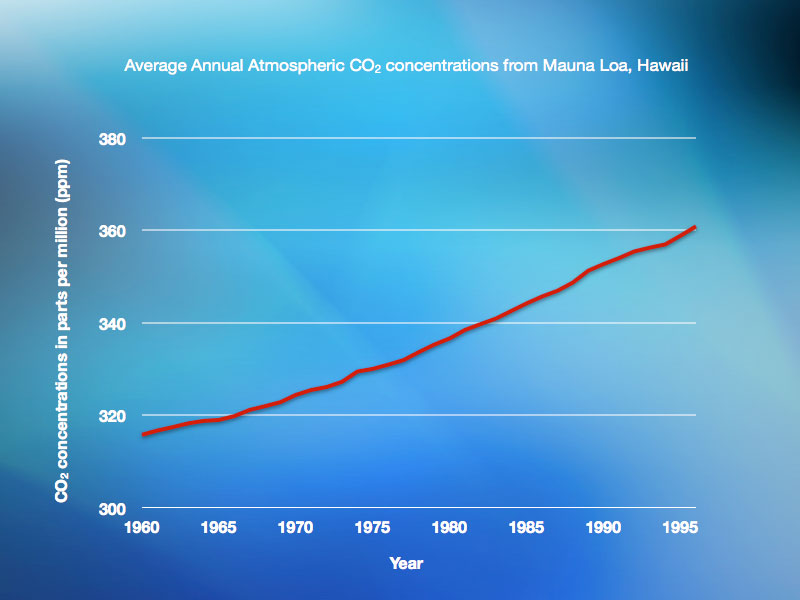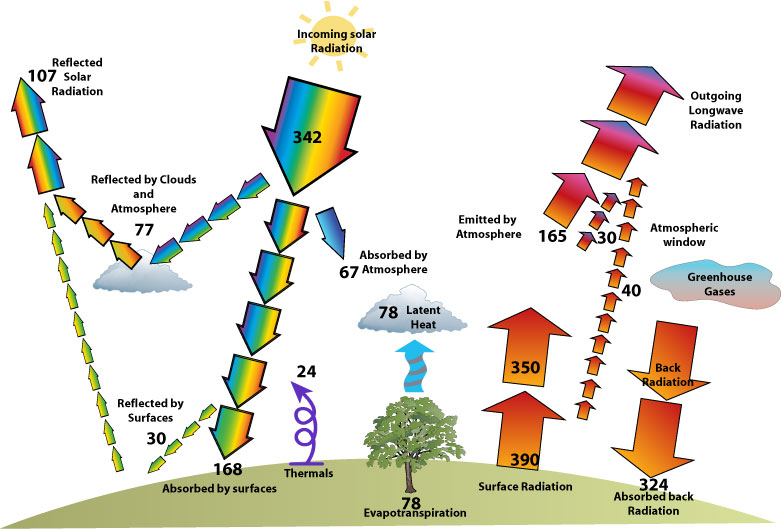6.1. 1: The Natural Greenhouse Effect
 There is little argument that global levels of Carbon dioxide are rising, and that the majority of the population link the rise in Carbon Dioxide levels to the issue of Global Warming through the “greenhouse effect”. However to large swathes of the populace the idea that the Greenhouse effect is in essence the natural state of our atmospheric systems is badly misunderstood in the least.
There is little argument that global levels of Carbon dioxide are rising, and that the majority of the population link the rise in Carbon Dioxide levels to the issue of Global Warming through the “greenhouse effect”. However to large swathes of the populace the idea that the Greenhouse effect is in essence the natural state of our atmospheric systems is badly misunderstood in the least.
The earth is warmed by incoming solar radiation that is then either reflected directly back to space or absorbed then returned as long wave thermal radiation (infrared). If this occurred as a simple exchange then the Earths average temperature would be around 25oC lower than the global average of 15oC.
The reason for the higher than expected average global temperature is the existence of greenhouse gases in the atmosphere. Nitrogen and oxygen form around 99% of the atmospheric cocktail yet neither gas can absorb or radiate thermal radiation. However some gases in the remaining 1% can. These include Carbon dioxide, water vapour,methane and nitrous oxides in the troposphere as well as as stratospheric ozone to an extent.
 This means that the natural Green House Effect is essential to continued existence of life on the planet. Without it the surface of the Earth would be much more like that of Mars.
This means that the natural Green House Effect is essential to continued existence of life on the planet. Without it the surface of the Earth would be much more like that of Mars.
James Lovelock argues very powerfully in the Gaia hypothesis not only that it is the presence of photosynthesising Green plants that are responsible for maintaining the balance within the atmosphere, but also that plants have over time altered climatic conditions to suit their own needs, through feedback mechanisms.
